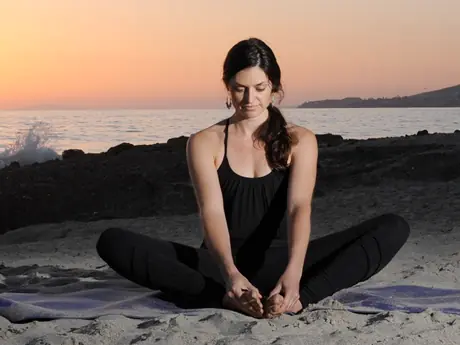HATHA
Hatha yoga is the foundational discipline on which nearly all other styles are based. In Sanskrit, ha represents the sun and tha, the moon—hence, the practice is designed to bring the yin and yang, light and dark, masculine and feminine aspects and polarities into balance. A class described as hatha will likely include slow-paced stretching, asanas, or postures, that are not too difficult, simple breathing exercises and perhaps, seated meditation. Hatha yoga classes provide a good starting point for beginners, who can learn basic poses and relaxation techniques.
INTEGRAL
A gentle style of yoga brought to this country in 1966 by Sri Swami Satchidananda. Classes are structured to balance physical effort with relaxation and include breathing practices, chanting and both guided and silent meditation. Integral yoga is suitable for beginners and helpful for more advanced students who wish to deepen their physical and spiritual awareness.
INTEGRATIVE YOGA THERAPY
Gentle postures, guided imagery, assisted stretching and breathwork help to make this style a useful one for rehab centers and hospitals. Joseph LePage began this therapy in the early 1990s to help promote healing and well-being for individuals facing heart disease, cancer, AIDS and psychiatric disorders.
IYENGAR (a.k.a. ALIGNMENT BASED YOGA)
Noted for precise alignment and symmetry of postures, the development of balance, and the use of props such as blocks, belts, blankets and bolsters. The use of props enable students to perform the asanas correctly, minimizing the risk of injury or strain, and making the postures accessible to both young and old. This method is a great style for beginners and can challenge seasoned practitioners as well as those who have a specific health problem they want to use yoga to work on. Developed by B.K.S. Iyengar who was instrumental in bringing yoga to the west in the 1960s. Most yoga teachers have practiced this form of yoga at one time or another in their career path. Even though Mr. Iyengar is in his 90s at the time of the writing, he still teaches yoga in India. His belief is that the body has its own intelligence and, if the body's physical alignment is focused, a full awareness and balance can be developed between the mind and body.
More: Iyengar: The Ideal Yoga for Athletes?
KRIPALU
An integrated practice that emphasizes breathing and alignment and coordinates the breath with movement. Kripalu was developed by Amrit Desai, a long time student of Kundalini yoga master Swami Kripaluvananda. This style incorporates three stages of development, beginning with postural alignment and progressing to meditation, with longer posture holding, finally creating a meditation in motion, where the movement from one posture to another happens unconsciously and spontaneously. Kripalu is suitable for everyone, from beginners to advanced students.
KUNDALINI
A powerful, enlightening style that incorporates mantras (chanting), meditation, visualization, breathing and guided relaxation, with precise postures. According to Hindu philosophy, kundalini is a concentrated form of prana, or life force, represented by a coiled, sleeping serpent said to reside at the base of the spine. When breath and movement awaken the serpent (energy), it moves up the spine through each of the seven chakras (energy centers) of the body, bringing energy and bliss. Once a closely guarded secret in India, kundalini yoga was first brought to the west in 1969. Kundalini will not appeal to everyone.
- 2
- of
- 3
About the Author

Get ACTIVE on the Go


Couch to 5K®
The best way to get new runners off the couch and across the finish line of their first 5K.
Available for iOS | Android







Discuss This Article